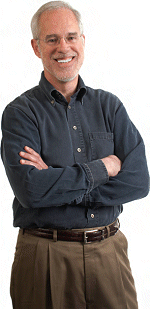Moving Forward
- By Geoffrey H. Fletcher
- 07/01/09
 This month's Campus Technology conference will delve
into the future of teaching and learning in a digital world.
This month's Campus Technology conference will delve
into the future of teaching and learning in a digital world.
When I was a faculty member
in the ed school at Miami
University (OH) back in the
early '80s, I struggled to keep my students
engaged in ways that have a
strange resonance with themes that
weave throughout this year's Campus
Technology conference, to be held in
Boston at the end of this month.
For example: "Immersive education"
was taking students to a lab school and
having them observe firsthand the interactions
of teachers and learners. "Interactive
media" was pausing a video tape
of a teacher in action and asking students
what the teacher should say at
critical points in a lesson. "Student collaboration"
was having students work in
small groups to design lessons.
Were we "envisioning the future" (as
we promise to do at our 16th annual
conference)? A bit, at least in terms of
pedagogical progress. But thinking back
to those early days should give heart to
even the most impatient of us (and I
include myself in that group) that innovations
in technology have indeed brought
us a very long way in a short time-- even
for today's digital generation.
Contrast my bit of teaching history
with sessions you will encounter in
Boston July 27-30:
- How immersive education is breaking
down barriers of time, space, and
distance through 3D and virtual environments,
to allow communication and collaboration
across levels of education,
curricular areas, and around the globe.
- How to create interactive media for
use with students and have students use
the tools to create content themselves.
- How to foster student collaboration
with wikis, social networking, and
scores of specific tools such as Twitter,
YouTube, Meebo Me, and more.
(For more information on these and
other CT 2009 sessions, go here.)
But the conference goes beyond
exploring new media, Web 2.0, and
social networking innovations. It is
designed to help faculty and administrators
realize the power and capabilities of
this digital age. Keynoter and Harvard (MA) Graduate School of Education
Professor Chris Dede will explore which
tools are appropriate to use when, and
help faculty understand that having
these tools can change their entire
approach to teaching. The technology
part is easy; the people part is more dif-
ficult. That is why a conference like
Campus Technology is so valuable-- you
learn from fellow attendees as well as
from the presenters. In addition, tools are
in place so you can continue benefiting
from the conference in a variety of ways,
including our first-ever Campus Technology
virtual conference this December.
McGuffey Hall, the 100-plus-year-old
building where I taught while I was at
Miami, recently underwent a $14 million
renovation, including "…making sure the
infrastructure of the classrooms had upto-
date technology," according to an article
in the Miami Student. Talk about
progress: I always struggled to find an
outlet to plug in the VCR in that building.
I'll see you in Boston.
--Geoff Fletcher, Editorial Director
CORRECTION: In "Capturing the Market," CT
June 2009, we
stated that Sonic Foundry holds a 40 percent-plus
market share of the lecture capture market.
That figure, which comes from research
analysts Frost & Sullivan, refers to the overall
market, including not only higher ed but also
corporate, government, and other sectors.
About the Author
Geoffrey H. Fletcher is the deputy executive director of the State Educational Technology Directors Association (SETDA).